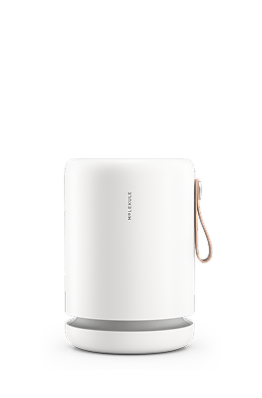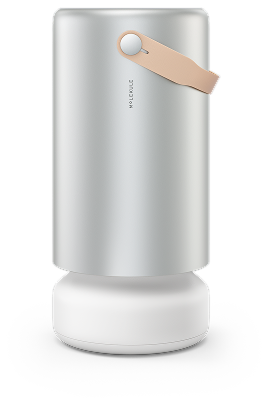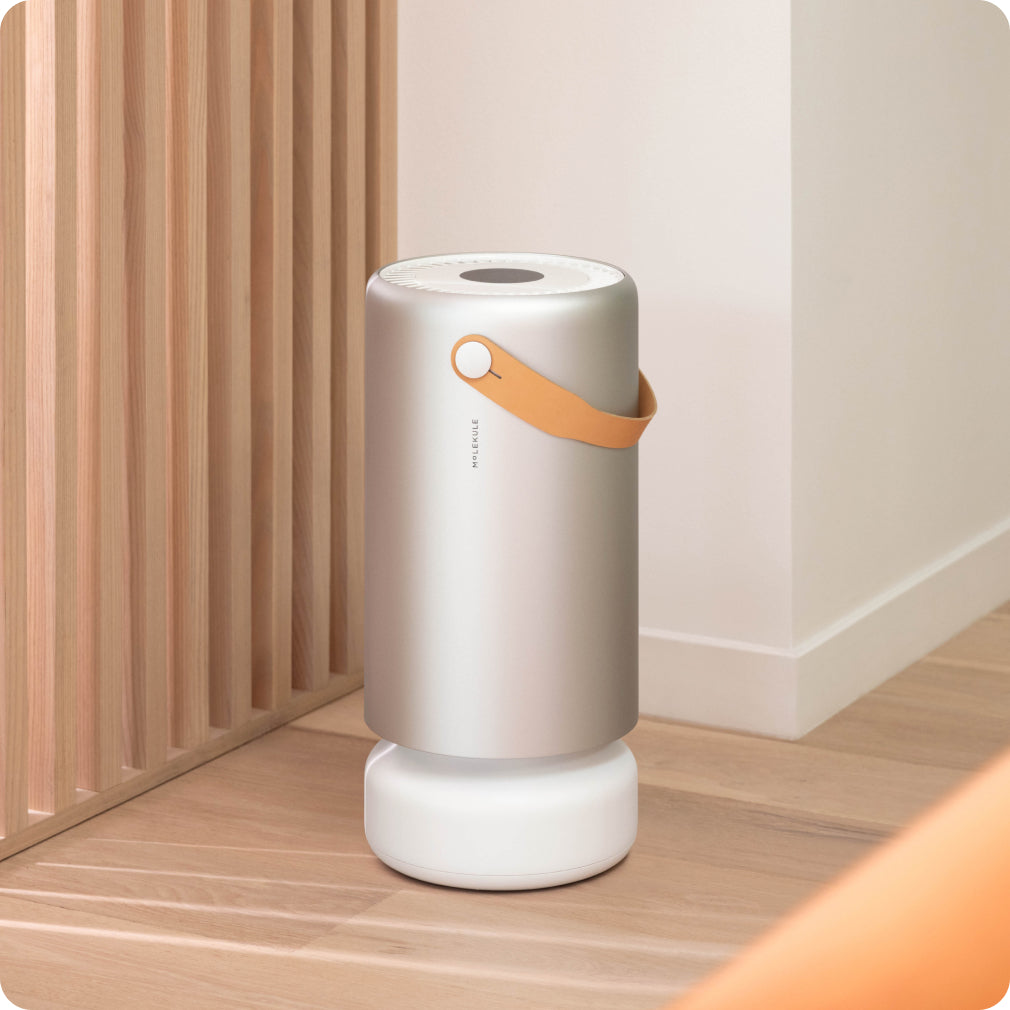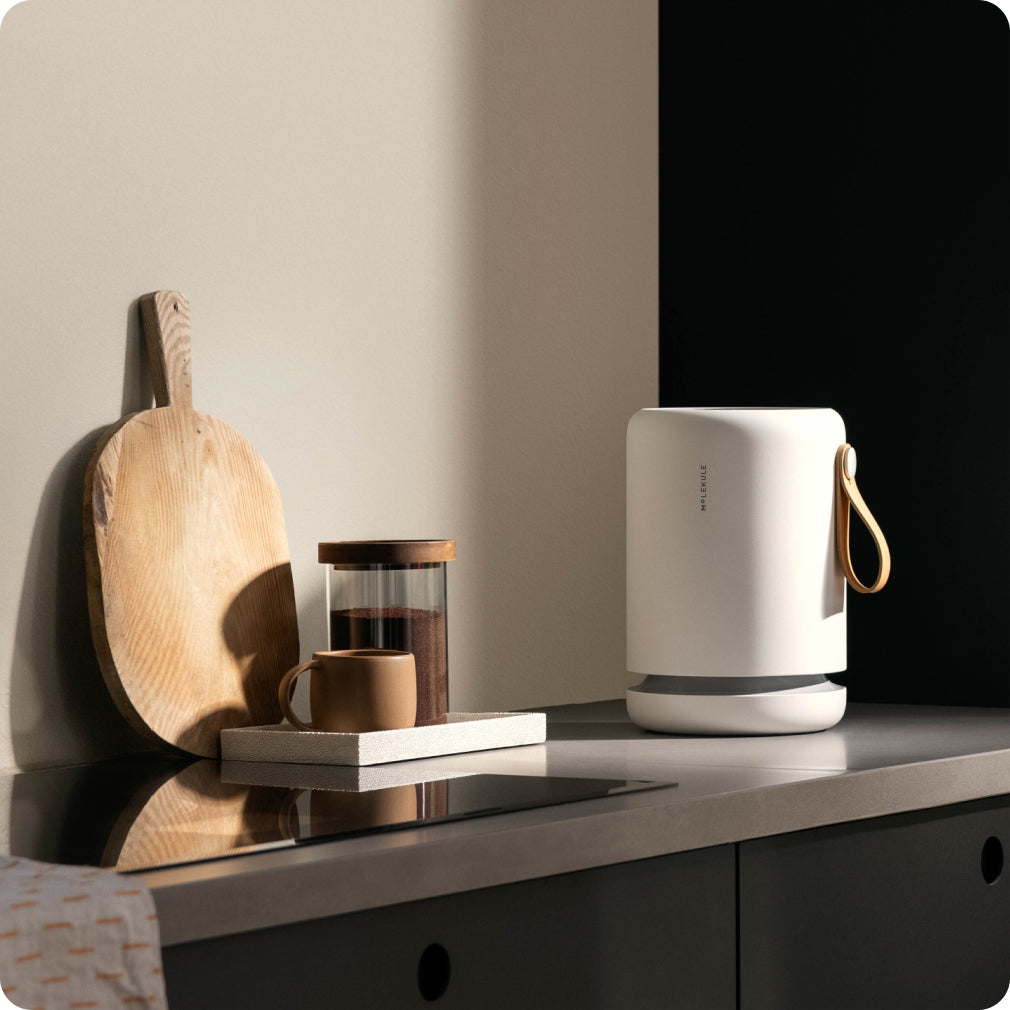When fire smoke infiltrates your home, its persistent odor can linger for months without proper treatment. This smell comes from microscopic smoke particles and volatile compounds that deeply penetrate porous surfaces.
Effective removal requires a systematic approach targeting both airborne particles and absorbed odors through ventilation, deep cleaning, odor neutralization, and ongoing air filtration using HEPA air purifiers. But which common cleaning mistake actually locks smoke odor into fabrics permanently?
Read on to discover the professional-grade removal strategies that eliminate even the most stubborn smoke smell when everything else has failed.
Why the Fire Smoke Smell Lingers
Before attempting smoke odor removal, it's important to understand why this particular smell is so difficult to eliminate. This knowledge will help you target your cleaning efforts more effectively.
The Science of Smoke Odor
Fire smoke creates extraordinarily persistent odors because of the:
-
Microscopic particle size: Smoke particles range from 0.1-4 microns, allowing them to penetrate deeply into porous materials.
-
Oil-based compounds: Many smoke components are lipophilic (oil-loving), causing them to bond with oils in materials.
-
Volatile organic compounds (VOCs): Gaseous components of smoke can permeate areas particles cannot reach. (This is one reason VOC air purifiers are so valuable.)
-
Chemical binding: Smoke particles chemically bond with surfaces rather than simply resting on them.
-
Acidic residue: Smoke creates acidic residue that continues releasing odor until neutralized.
These properties mean that simply masking the smell with air fresheners is ineffective — the odor-causing molecules remain embedded in your home’s surfaces.
Where Smoke Particles Hide
Smoke odor persists because particles hide in numerous locations:
-
Soft surfaces: Upholstery, carpets, curtains, bedding absorb particles deeply.
-
HVAC systems: Ductwork and filters trap and recirculate smoke.
-
Porous building materials: Drywall, unfinished wood, and insulation trap odor molecules.
-
Cracks and crevices: Smoke penetrates tiny openings around doors, windows, and trim.
-
Electronic devices: Internal components trap smoke particles that release odor when heated.
Understanding these hiding places can help you create a comprehensive cleaning strategy that will address all sources of lingering smoke smell.
Immediate Steps After Fire Smoke Exposure
The first 24-48 hours after smoke exposure are critical for preventing permanent odor. Taking swift action during this period significantly reduces the time and effort necessary for complete odor removal.
First Priority: Ventilation
Before any cleaning begins, maximize ventilation to remove airborne smoke particles. Act fast by taking these steps:
-
Open all windows and doors to create cross-ventilation.
-
Place box fans in windows pointing outward to pull smoky air outside.
-
Create pressure differentials by positioning fans to move air from clean areas toward smoky areas.
-
Use ceiling fans to keep air circulating.
-
Change HVAC filters to high-efficiency MERV 13+ rated air filters that can handle wildfire smoke.
Continue maximum ventilation for at least 12-24 hours, weather permitting.
Remove Embedded Smoke Residue With Deep Cleaning
Once ventilation has removed airborne particles, thorough cleaning is necessary to eliminate smoke residue from all surfaces. Different materials require specific approaches for effective smoke odor removal.
Hard Surface Cleaning: Walls, Ceilings, and Floors
Hard surfaces often have a visible layer of smoke residue that you need to remove completely. Before using any liquids, follow these steps for dry cleaning:
-
Use chemical sponges (dry cleaning sponges) for walls and ceilings.
-
Work from top to bottom in straight, overlapping lines.
-
Change sponge surfaces frequently as they become soiled.
-
Vacuum all hard surfaces with a HEPA vacuum before wet cleaning.
Next, you’ll move onto wet cleaning. Below is a table of recommended cleaning solutions. Always test cleaning solutions in an inconspicuous area first to ensure they won't damage the surface.
|
Surface Type |
Recommended Cleaning Solution |
Application Method |
|
Painted walls/ceilings |
Trisodium phosphate (TSP) solution (1 tbsp per gallon of warm water) |
Sponge or soft cloth, rinse with clean water |
|
Wood furniture/trim |
Equal parts white vinegar and water with a few drops of dish soap |
Soft cloth, wipe in direction of wood grain |
|
Tile and stone |
Commercial smoke odor remover or vinegar solution |
Spray and wipe or mop |
|
Glass and mirrors |
1:1 vinegar and water solution |
Spray and wipe with microfiber cloth |
|
Metal surfaces |
Baking soda paste for tarnished areas, then commercial metal cleaner |
Apply paste, scrub gently, rinse |
Fabric and Upholstery Treatment
Soft surfaces require special attention as they absorb smoke odor deeply. Recommendations are different, depending on whether you’re treating a washable fabric, upholstered furniture, or carpet or rug.
Washable Fabrics
-
Launder with 1 cup of white vinegar added to the wash cycle.
-
Use the hottest water setting the fabric can tolerate.
-
Add 1/2 cup of baking soda to the detergent.
-
Air dry outside if possible for additional odor removal.
-
Repeat if necessary until the odor is completely gone.
Upholstered Furniture
-
Begin with thorough HEPA vacuuming on all surfaces.
-
Sprinkle baking soda liberally over all fabric surfaces.
-
Let sit for at least 24 hours to absorb odors.
-
Vacuum completely with HEPA vacuum.
-
For persistent odors, use a steam cleaner with an upholstery attachment.
-
Consider professional cleaning for valuable pieces with a stubborn odor.
Carpets and Rugs
-
Start with a generous baking soda application.
-
Work into fibers with a soft brush.
-
Let sit 24-48 hours.
-
Vacuum thoroughly with HEPA filter vacuum.
-
Follow with steam cleaning using a specialized smoke odor removal solution.
-
Consider professional cleaning for wool rugs or wall-to-wall carpeting.
HVAC System and Ductwork Cleaning
Don’t forget to clean your HVAC system and ductwork, too. Your heating and cooling system can recirculate smoke particles throughout your home, so it’s necessary to pay special attention to this cleaning step as well.
-
Replace all air filters with high-efficiency options.
-
Clean all accessible air vents and returns using vacuum and damp microfiber cloth.
-
Apply EPA-registered disinfectant to visible ductwork surfaces.
-
Consider professional duct cleaning for significant smoke exposure.
-
Clean the air conditioner coils if accessible.
-
Apply duct sanitizer according to manufacturer directions.
Effective Odor Neutralizing Products: Beyond Basic Cleaning
After you’ve completed a thorough cleaning, you might invest in specialized products that can neutralize any remaining odor molecules that may be lingering.
Commercial Odor Neutralizers
For severe smoke odor, professional-grade products typically outperform consumer options. Several specialized products are designed specifically for smoke odor:
-
Enzymatic cleaners: Break down organic odor compounds biologically.
-
Oxidizing agents: Chemically alter odor molecules, rendering them odorless.
-
Activated oxygen products: Release oxygen molecules that bond with odor compounds.
-
Acid neutralizers: Counter acidic smoke residue.
-
Thermal foggers: Create microscopic particles that penetrate materials like smoke did.
Natural Alternatives
Several household items can effectively neutralize less severe smoke odors. These natural tools for removing smells work best for mild to moderate odors or as supplements to more intensive methods:
-
White vinegar: Place bowls of undiluted white vinegar around affected rooms.
-
Activated charcoal: Distribute in shallow containers to absorb odor molecules.
-
Baking soda: Beyond cleaning, can be left out in bowls to absorb odors.
-
Coffee grounds: Dried used grounds absorb odors in small spaces.
-
Fresh cut onions: Cut an onion in half and place in water to draw odors from the air.
Different Application Methods
The method of application can make a significant difference. Here are your options.
Surface Applications
-
Spray application: For accessible surface odors.
-
Foam application: For vertical surfaces with longer dwell time.
-
Wipe application: For furniture and delicate surfaces.
Air Treatment Methods
-
Thermal fogging: Creates microscopic particles that penetrate like smoke.
-
Ozone treatment: Generates ozone gas that oxidizes odor molecules (requires professional application and temporary evacuation).
-
Hydroxyl generation: Creates hydroxyl radicals that break down odor molecules (safer than ozone).
-
Vapor systems: Disperse odor neutralizers into the air.
For serious smoke odor situations, professional thermal fogging often provides the most comprehensive results as it mimics how smoke entered the materials in the first place.
Air Purification Solutions
Even after thorough cleaning, some smoke particles may remain airborne or continue releasing from materials. Air purification technology provides ongoing removal of these particles and odor molecules. Different air purification technologies target specific components of smoke odor.
|
Technology |
Effectiveness for Smoke |
How It Works |
Limitations |
|
HEPA Filtration |
Excellent for particles |
Mechanically traps particles as small as 0.3 microns |
Doesn't remove gases or odors |
|
Activated Carbon |
Good for odors and gases |
Adsorbs odor molecules and VOCs |
Limited capacity; requires replacement |
|
PECO Technology |
Very good for both |
Destroys particles and VOCs at molecular level |
Higher cost |
|
Ionization |
Moderate |
Charges particles so they stick to surfaces |
May produce ozone; doesn't remove gases |
|
UV Light |
Limited for smoke |
Kills biological contaminants but not effective for smoke |
Minimal impact on smoke particles or odors |
For most smoke situations, a combination of HEPA filtration and substantial activated carbon (5+ pounds) provides the most effective ongoing protection.
Strategic Air Purifier Placement
Where you place your unit significantly impacts the ability of the air purifier to work effectively against smoke:
-
Position in the center of the room when possible for optimal air circulation.
-
Place near odor sources like upholstery or carpets still releasing smoke smell.
-
Ensure unobstructed airflow around all sides of the unit.
-
Consider doorways to help clean air in adjacent spaces.
-
Bedroom placement improves sleep quality during remediation.
-
Multiple units may be necessary for larger homes or severe contamination.
Maintain Air Quality After Initial Cleanup
Ongoing air quality management prevents smoke odor recurrence:
-
Regular filter replacement: More frequently initially after smoke exposure.
-
Extended operation: Run purifiers 24/7 for at least 2-4 weeks after cleaning.
-
Regular HVAC filter changes: Every 30 days until odor is completely gone.
-
Humidity control: Keep relative humidity 40-50% to discourage odor release.
-
Periodic reapplication of odor neutralizers: As needed.
When to Call Professionals for Severe Smoke Damage
While many smoke odor situations can be handled with DIY methods, some cases require professional intervention. Recognizing when to seek help saves time and ensures complete odor removal.
Signs You Need Professional Help
Consider professional remediation if:
-
Smoke odor persists after thorough DIY cleaning attempts
-
Smoke resulted from actual fire (it’s not just cooking smells or fireplace smoke)
-
Smoke exposure was prolonged (more than a few hours)
-
Affected area is large (multiple rooms or whole house)
-
Valuable items like antiques or electronics need specialized cleaning
-
HVAC system was running during smoke exposure
-
Structural materials like insulation were exposed to smoke
If the smoke resulted from a fire covered by homeowner's insurance, remediation costs may be partially or fully covered. Contact your insurance provider to understand your coverage before hiring professionals.
Prevent Future Smoke Odor Issues
After successfully eliminating smoke odor, take steps to prevent or minimize future incidents. Several home improvements can reduce smoke infiltration:
-
Upgrade HVAC filtration to MERV 13+ or install whole-house air purification.
-
Improve weatherstripping around doors and windows to reduce outdoor smoke infiltration.
-
Install smoke detectors with early warning capability.
-
Consider fireplace upgrades like glass doors and better dampers.
-
Range hood venting that exhausts directly outside for cooking smoke.
Create an Emergency Smoke Response Kit
Prepare a wildfire kit with essential supplies for immediate response to smoke incidents:
-
Baking soda for immediate odor absorption
-
White vinegar for quick cleaning solution
-
Chemical sponges for dry cleaning smoke residue
-
Microfiber cloths for surface cleaning
-
HEPA air purifier for smoke that’s ready for immediate use
-
N95 masks for protection during cleanup
-
Commercial smoke odor neutralizer for quick application
Having these supplies ready allows for immediate action, significantly reducing odor persistence.
Wildfire Smoke Preparation
For those in wildfire-prone areas, additional preparation is advisable:
-
Create a designated clean room that you can quickly seal and equip with filtration.
-
Develop a home sealing plan to implement when wildfire smoke threatens.
-
Install portable air quality sensors for early detection of smoke infiltration.
-
Consider window coverings that you can quickly deploy to reduce infiltration.
- Monitor air quality on a cadence to protect your pets from wildfire smoke.
Eliminating smoke odor from your home requires a comprehensive approach targeting all affected materials and spaces. By understanding the science behind smoke odor persistence, you can implement
With persistence and the right techniques, you can completely eliminate even the most stubborn smoke odor, restoring your home to a fresh and clean smelling environment.
Frequently Asked Questions
How long does it typically take to remove smoke smell from a house?
Minor smoke incidents can be resolved in 2-5 days, while major smoke damage may require 2-4 weeks of treatment using multiple approaches.
Will painting over smoke-damaged walls eliminate the odor?
No, painting without proper cleaning and priming will trap odors that can later be released; always clean thoroughly and use a stain-blocking primer before painting.
Are ozone generators safe and effective for smoke odor removal?
Ozone generators can be effective but pose health risks and may damage certain materials; professional application with proper safety protocols is recommended.
What's the best air purifier specifically for smoke odor?
The most effective units combine true HEPA filtration with substantial activated carbon (5+ pounds) and should be sized appropriately for your room dimensions.
Can smoke odor return after it seems to be gone?
Yes, particularly in humid weather when materials expand and release trapped odor molecules, which is why thorough initial treatment is essential.







